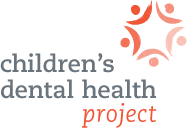The Children's Dental Health Project's blog
The opportunity that risk-based care presents
 The following guest blog post was written by Benjamin Chaffee, assistant professor of oral epidemiology and dental public health at the University of California San Francisco (UCSF) School of Dentistry. He is also the director of the Program in Global Oral Health at UCSF’s School of Dentistry.
The following guest blog post was written by Benjamin Chaffee, assistant professor of oral epidemiology and dental public health at the University of California San Francisco (UCSF) School of Dentistry. He is also the director of the Program in Global Oral Health at UCSF’s School of Dentistry.
A caries risk assessment (CRA) has long been promoted for prevention-focused management of dental caries — the disease that causes tooth decay. A new study conducted by the University of California San Francisco (UCSF) School of Dentistry validates the importance of conducting CRAs and demonstrates that these assessments can help reduce tooth decay when dental practitioners provide preventive services that are aligned with a person’s caries risk.
By identifying specific factors that raise the risk of caries and matching high-risk patients with appropriate non-surgical preventive therapies (such as dietary counseling, antibacterial agents and fluorides), a risk assessment may help both children and adults avoid more invasive and costly dental treatments. Our recent study at UCSF supports this conclusion.
. . . a risk assessment may help both children and adults avoid more invasive and costly dental treatments.
There are multiple CRA instruments to guide dental providers, including brief questionnaires and computer-based algorithms. Among the various modalities, Caries Management by Risk Assessment (CAMBRA), developed by a national expert working group, explicitly links risk assessment with disease management. We studied the implementation of caries risk assessment in our teaching clinics from the time CAMBRA was integrated into the didactic and clinical curricula about 15 years ago.
 We've shown that the CRA categories (low, moderate, high, or extreme) assigned by our pre-doctoral students and post-graduate pediatric dentistry residents are highly predictive of our patients’ tooth decay experience. Among our adult high-risk patients, repeated provision of caries preventive agents was associated with a lower rate of tooth decay. A randomized controlled trial of antibacterial and fluoride therapy for high-risk patients suggested a decrease in caries over two years that was facilitated through reductions in caries risk factors.
We've shown that the CRA categories (low, moderate, high, or extreme) assigned by our pre-doctoral students and post-graduate pediatric dentistry residents are highly predictive of our patients’ tooth decay experience. Among our adult high-risk patients, repeated provision of caries preventive agents was associated with a lower rate of tooth decay. A randomized controlled trial of antibacterial and fluoride therapy for high-risk patients suggested a decrease in caries over two years that was facilitated through reductions in caries risk factors.
Despite evidence-based recommendations, the dental profession as a whole remains at a distance from fully embracing prevention-focused, risk-based dental care. Of course, conducting a risk assessment is only the first component of CAMBRA. Indeed, patients are helped little if nothing follows a caries risk assessment but dental fillings. Appropriate attention should be paid to the predisposing factors that elevate a person’s risk of caries, including sugary diets, oral bacteria and limited exposure to fluorides. Traditional "drill and fill" dentistry does not address all of these crucial factors.
... it took a decade of persistent effort to raise the percentage of new patients who completed risk assessments from 40% to 95% today.
Among patients aged 6-months to 6-years, most of the individual items in our baseline CRA form were independently associated with providers' decisions to categorize a patient as high risk for caries. Providers' decision-making was associated with multiple aspects of a child's behavioral, environmental and clinical risk factors, which suggests that the CRA is a key opportunity for dental providers, patients, and families to also decide upon personalized caries-prevention strategies. Among our pre-doctoral dental students, patient caries risk status was strongly associated with providing preventive agents like antibacterial and fluoride treatments.
 While our findings are encouraging, a university teaching clinic is an imperfect reflection of private or community practice. For example, unlike the general population, the university patient population is predominantly high caries risk, and student graduation impedes long-term, patient-provider relationships. Dentists in practice may be more resistant to adopting CRA, potentially based on more traditional views of caries management or a lack of financial incentives for providing risk assessments. Even at the university, CRA was not adopted overnight: it took a decade of persistent effort to raise the percentage of new patients who completed risk assessments from 40% (when CAMBRA was first introduced in the student clinics) to 95% today.
While our findings are encouraging, a university teaching clinic is an imperfect reflection of private or community practice. For example, unlike the general population, the university patient population is predominantly high caries risk, and student graduation impedes long-term, patient-provider relationships. Dentists in practice may be more resistant to adopting CRA, potentially based on more traditional views of caries management or a lack of financial incentives for providing risk assessments. Even at the university, CRA was not adopted overnight: it took a decade of persistent effort to raise the percentage of new patients who completed risk assessments from 40% (when CAMBRA was first introduced in the student clinics) to 95% today.
Our UCSF experience suggests that a prevention-oriented, risk-based philosophy to caries management can be successfully incorporated as the standard of care within a large dental care organization. Greater adoption of risk-based, preventive dental care across the profession promises to help children and adults avoid more cavities and fillings in the years ahead.
